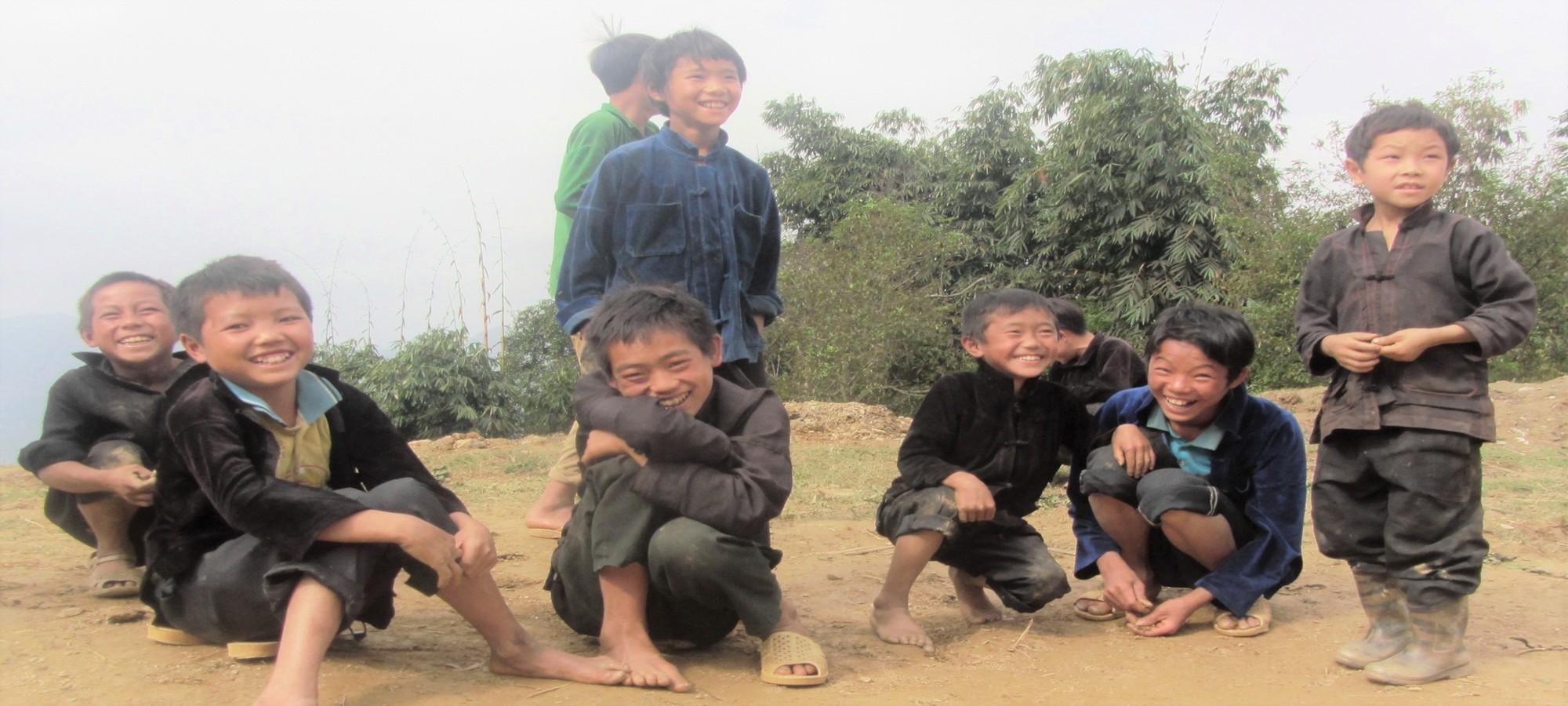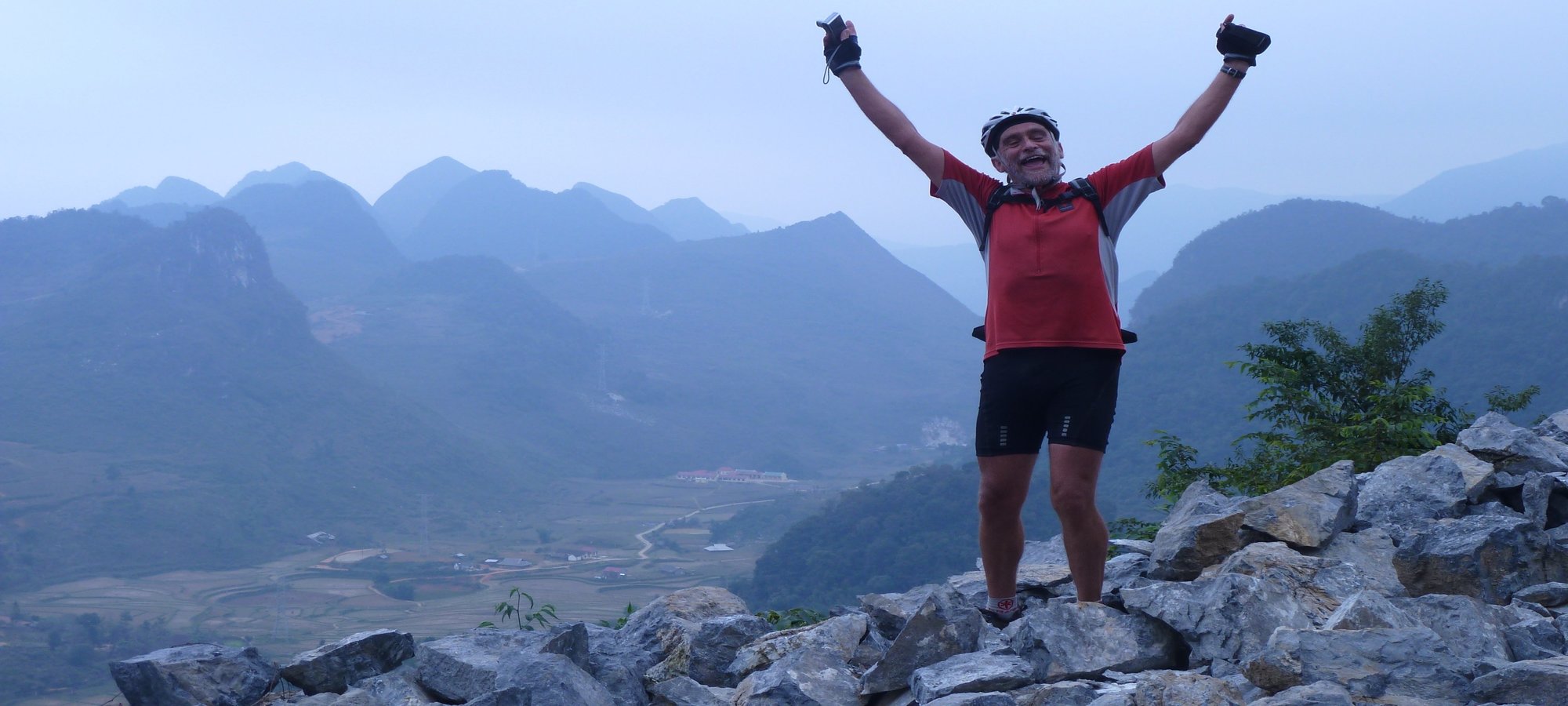Key Places - Vietnam N.E
Breathtaking Landscapes and Hidden Cultures
Dong Van
Nestled in a valley in the heart of the Dong Van Rock Plateau in North East Vietnam, is the isolated town of Dong Van. The plateau is a registered UNESCO Global Geopark, 80% of the terrain is covered by rock and it is said to contain fossils from 400-600million years ago. The Ma Phi Leng Pass looks down from an altitude of around 1500m into the valley it is the upper most point of Northern Vietnam and legend has it that you can touch both heaven and earth from here.
The town of Dong Van is very close to the Chinese border and surrounded by mountain forest and multi-coloured orchids. Meaning 'sharing culture' Dong Van is occupied by Chinese Hoa, H'mong, Tay and Kinh People. The houses are built in a Chinese style.
A short distance up above the town and accessible by paved road is an old fort. Looking down from here you are rewarded with spectacular views of town and the surrounding area.
On a Sunday the road to Dong Van is filled with processions of Dao, H'Mong and other ethnic groups emerging from all directions of the mountains to travel to Dong Van Market. There is much good natured chat on the long journey. The traders shoulder bamboo baskets of rice and vegetables as well as leading their livestock and other goods to sell at the market. Many of the minority people, especially young girls, dress in colourful traditional costumes for their journey to Dong Van Market. Whole families come to the market to trade, socialise and enjoy bowls of noodle soup and other local delicacies.
Ha Long Bay
Ha Long Bay Situated in the Gulf of Tonkin, a UNESCO World Heritage Site, "Descending Dragon Bay' or Ha Long Bay, is an area of outstanding natural beauty. Approximately 1,553 km2, it includes numerous islets, most of which are limestone and schist. The karst rock formations have developed over 20 million years under the impact of the tropical wet climate.
There is huge geographical diversity here, which has led to biodiversity, with ecosystems of salt water-flooded forests, coral reefs, and tropical forests hosting thousands of species of animal and plant life.
Evidence suggests the presence of pre-historical human beings in this area tens of thousands years ago. Most of the islets are uninhabited due to the nature of the karst structures. The bay has the aura of an ancient forgotten world; as you journey around the bay seeing the stones from different vantage points their formations appear to change.
Spanning the coastline of Bai Chay Beach, the best way to enjoy the bay is to travel out on a junk-styled boat from which you can swim, dive, fish and explore the endless caves and grottoes.
Hanoi
Built on the right bank of the Red River, the beautiful and tranquil city of Hanoi is Vietnam's capital and the second largest city in the country with a population of 6.5 million. Ha meaning 'river' and Noi meaning 'within '- Ha Noi literally is ' within the river'. This name was given to the city by the Nguyen dynasty in 1832.
From 1010 until 1802, it was the Vietnamese political centre, but during the Nguyen dynasty, the city of Hue took its place. Hanoi became the capital of French Indochina from 1902 to 1954 and bears the markings of this era in its architecture, leafy boulevards and an air of colonial elegance. The ambiance of the city combined with its fine coffee and perfect baguettes have led some to call it the 'Paris of the East' but city life runs at a fast pace with all the markings of modern Asia.
Its ancient name Thanh Long (City of the Soaring Dragon) truly sums up the spirit of contemporary Hanoi. The Old Quarter has been the trading centre for the past 1000 years and is a maze of narrow cobblestone streets each named after a trade or guild. Here you will find market stall traders hard at work plying their wares, and an array of restaurants and street cafes where old men sip their coffee or Bia Hoi (beer) and watch the world go by. The buzz of a passing motorbike is never far away and this is the tourist hub of the city. As you wander the streets you will find that people stop and chat, welcoming strangers is the cultural norm here.
Meo Vac
Located in picturesque valley, the small town of Meo Vac is 70 km away from Dong Van, by way of a modest road alongside a vast gorge with spectacular views. This is a winding and undulating route with views of the Nho Que River below. Meo Vac has a harsh climate in the winter (November to April) with dry and freezing cold weather.
Most of the tribes living here have preserved their way of life from outside influence as travelling to Meo Vac was almost impossible until the recent building of new roads. It is documented that the construction of the former road between 1959 and 1965 took members of 16 different minorities suspending themselves from the sides of the mountains and cliffs to make the Ma Pi Leng Pass accessible.
There is a busy local market here every Sunday which brings a lively buzz to the town. For the local women this is an opportunity to trade, for the men it is a time to socialise.
If you need assistance or wish to discuss the tour, please feel free to call us on +44 (0) 1463 417707.
Alternatively, you can email us on office@redspokes.co.uk for more information on this adventure holiday.
Key Places
There are several key places on our Vietnam N.E cycling holiday. Please choose from the following list for more information on each key place.
Customer Testimonial
"What a great place for a cycling holiday. A mesmerizing hidden corner of Vietnam, totally unspoilt, notraffic, no tourists and undoubtedly the most spectacular scenery in the whole country. Cycling among..."
Robert Wright























.jpg)